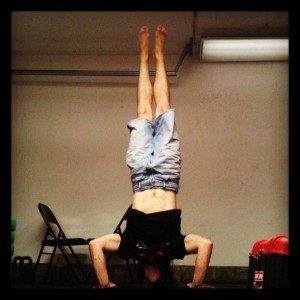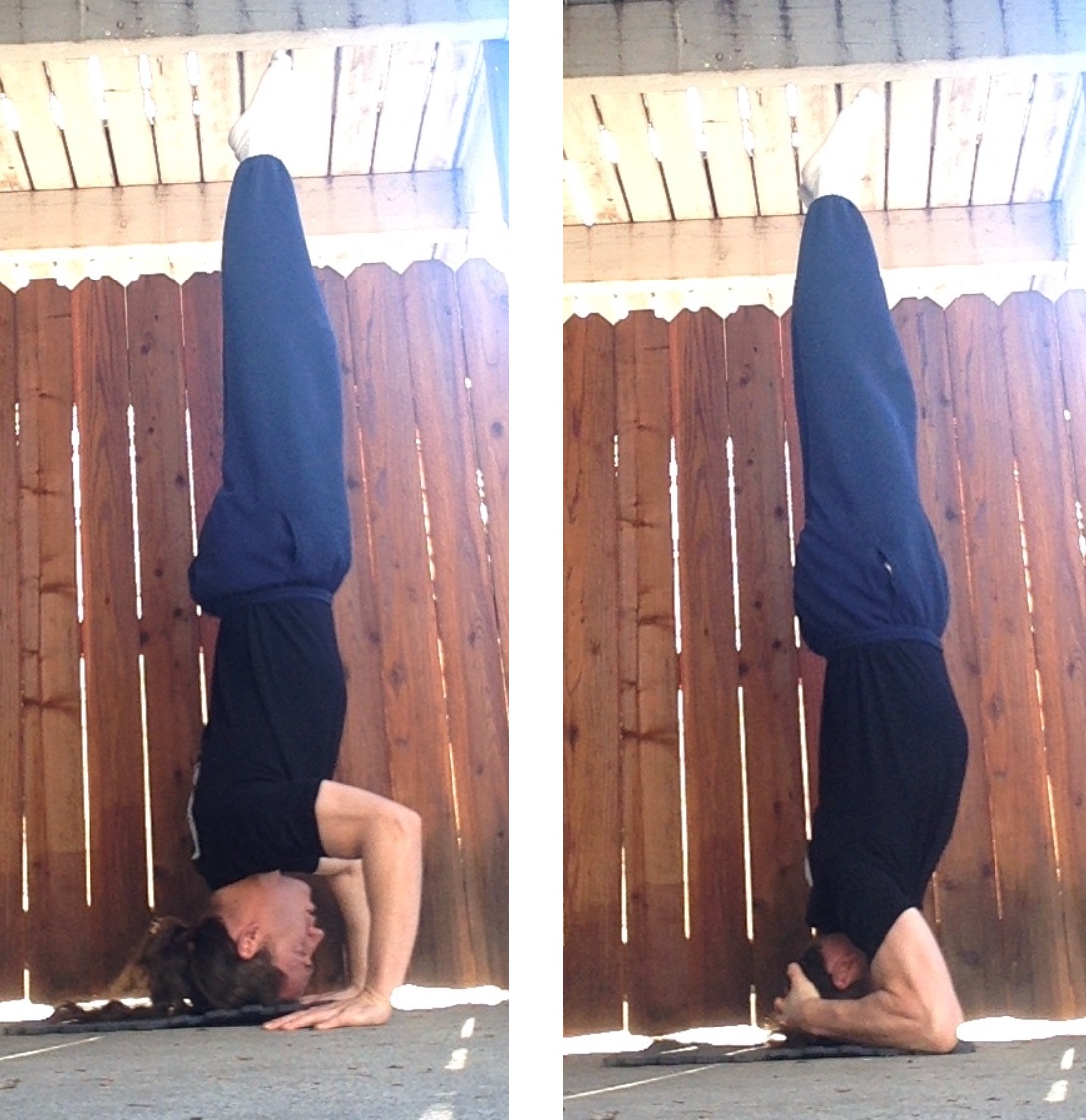Balancing is a movement quality that is sometimes thought of, but not always. On that note, what is involved in training for balance?
Gail asks:
“I was thinking about what is involved with balance. What I have come up with so far: Strength in certain specific muscles ie- core for cycling & probably most other exercises-, the Tree Pose in Yoga requires strong quads. I think balance requires a certain amount of confidence. I am curious what other attributes you think one needs to have good balance. I am almost 5’7” & have extremely small feet – ladies 7-7 1/2. As a child I had a difficult time doing any balance beam exercises. I use to think that it was because my feet were not big enough to give me a good platform —. I turned 60 last month & I know that as I become older balance exercises will become important. I imagine in order to first perfect & then teach the handstand you must have given some thought as to what comprises balance. I am curious about your observations.”
Great topic and yes, I have given lots of thought to this topic because of handstands which I’m getting back to doing.

Plus, I received a slack line as a gift for Christmas and have been practicing balancing on that the past couple weeks, so the topic is fresh in mind.
Balance is Specific
Something Pavel Tsatsouline said stuck with me years later. It was probably based on some Russian research that I’m not going to look up now. And that is “Balance is specific.”
Meaning you get better balancing whatever you’re specifically working on. No amount of walking on a slack line is going to help your handstand or vice versa.
I think Pavel is right about this when looking at high levels of balancing skill…
However, there is certainly a more foundational level of basic movement quality, balance included, that does seem to be general.
How Balancing Works
At one point in time it took you learning to balance in order to stand and walk. Nowadays, you can do that without thinking about it (at least I hope that’s the case!)

Why it is so easy now?
Go ahead and pay attention to yourself standing right now. Notice that you are not actually standing still, but your body is constantly making micro-corrections. These are done in order to stay standing.
This is so easy for you now, that you don’t even notice it. Essentially, you’re nervous system is on auto-pilot in making this corrections.
While it may not be easy, unconscious or auto-pilot, the same type of thing happens with any kind of balancing.
When you first try something hard, let’s say doing a freestanding handstand, or standing on a slack line (or standing for the first time as a baby), you do not know how to make these micro-corrections.
You try and make big corrections. Often times these don’t work and just serve to throw you out of balance the other way.
Over time, as you practice balancing, you’re able to find that balancing point and make smaller and smaller corrections to stay there.
In so doing the confidence in your balancing skill comes naturally. Any if you practice something enough, it could become as automatic as walking on the ground is to you now.
Training for Balance is based Primarily on Nervous System
While there can be a strength component to certain balance exercises, it is actually quite minor (at least when compared to the main strength exercises like squats or presses). For instance, handstands don’t take much when you learn how to use your body’s structure.
As I mentioned, it’s really about the nervous system getting feedback in how you’re shifting (aka balancing) and then sending signals to correct. The tighter this feedback loop becomes the better you can balance.
This applies to high level balancing skills. (This is why they’re some of the easiest things to hack with various mental training drills such as those I share inside Practicing Strength and Movement.)
This applies to general balance too.
How to Avoid Being Elderly and Losing Balance
If we think about the stereotypical frail elderly they often lose the ability to balance in this simple way which can result in falls and injury. Not good.
Why does this happen? Generally, elderly people move less and less so that they’re able to move less and less. Over time this keeps compounding, until you get to the point where you’re worried about your parent falling down stairs walking up or down them.
To counter this move more, not less.
To counter the loss of balance, practice more balancing.
If your aim is general health and wellness, better than practicing one high level skill, would be to practice lots of different types of balancing. Here’s just a few ideas:
- Hand balancing (from the simple frogstand up to one arm handstands)
- Head balancing (from a wide base with both hands up to balancing on just the head)
- Slack lining
- Balance beams
- Walking on fallen logs in the forest
- Standing on one leg or one legged squats
- Cycling
- Skateboarding
- Skating
- Bosu Balls
- Swiss Balls
- Stilts
- And much more
This would train your movement, your nervous system, your sense of balance in a wide range of ways.
With this generalized training for balance, you can bet that you would pick up any new balancing skill much faster. It would still take dedicated practice to get “good” at anything, but you’d be starting from a solid base.
Base of Support
As far as small feet goes, that’s part of understanding base of support and how that effects training for balance with anything.
You’re right, small feet would make a balance beam tougher.
It’s the same as comparing a tripod headstand vs a yoga handstand.

Notice that the tripod has a larger base with the hands flat on the ground, versus the forearms in the yoga version. That’s why starting with one then moving to the other is a good progression for training your balancing.
While you may not be able to do anything about making your feet bigger, understanding this principle is helpful for improving balance in pretty much anything.
If you understand all these ideas you’ll be able to improve balance all throughout your life, up through old age, and be able to gain any balancing skill faster than most. As for the actual training for balance that goes into these various things, that’s a topic for other articles.

Comments
I’d suggest that balance is not specific to activity. If you practice feeling your foundation you can use it to feel where your center of gravity is in relation to it. Balance then becomes a simple case of learning to feel when your center is shifting and countering the shift to keep your center over your foundation. Sensitivity aside, another way to work on balance is to improve the stability of your foundation. So for example, standing on one foot as in tree pose you could make balance easier by making your foot and ankle more rigid.